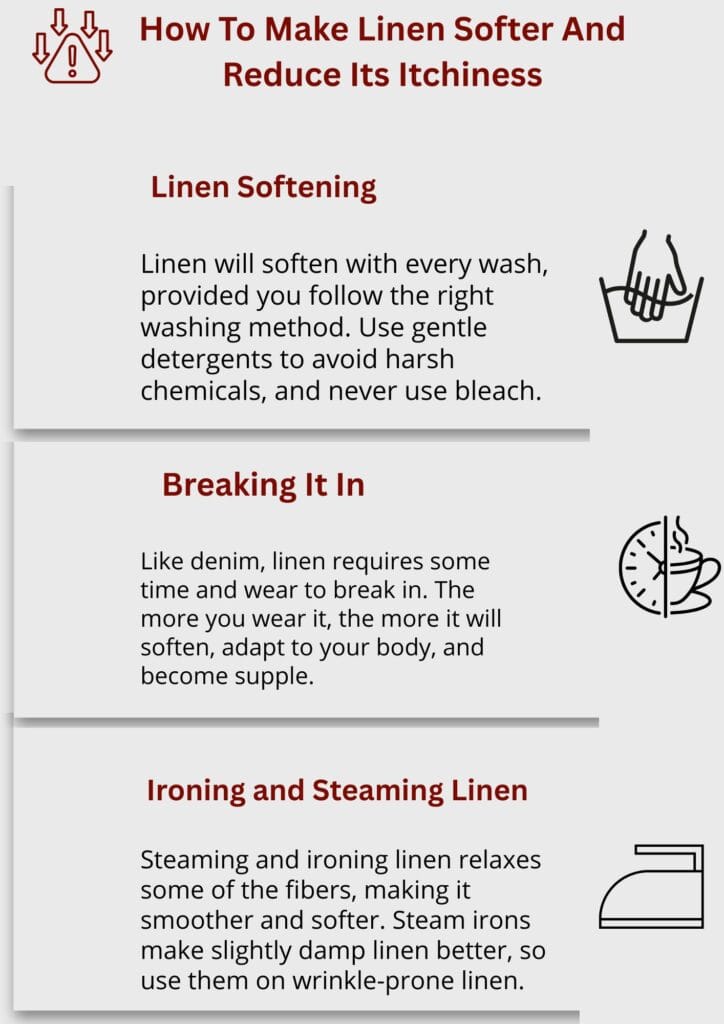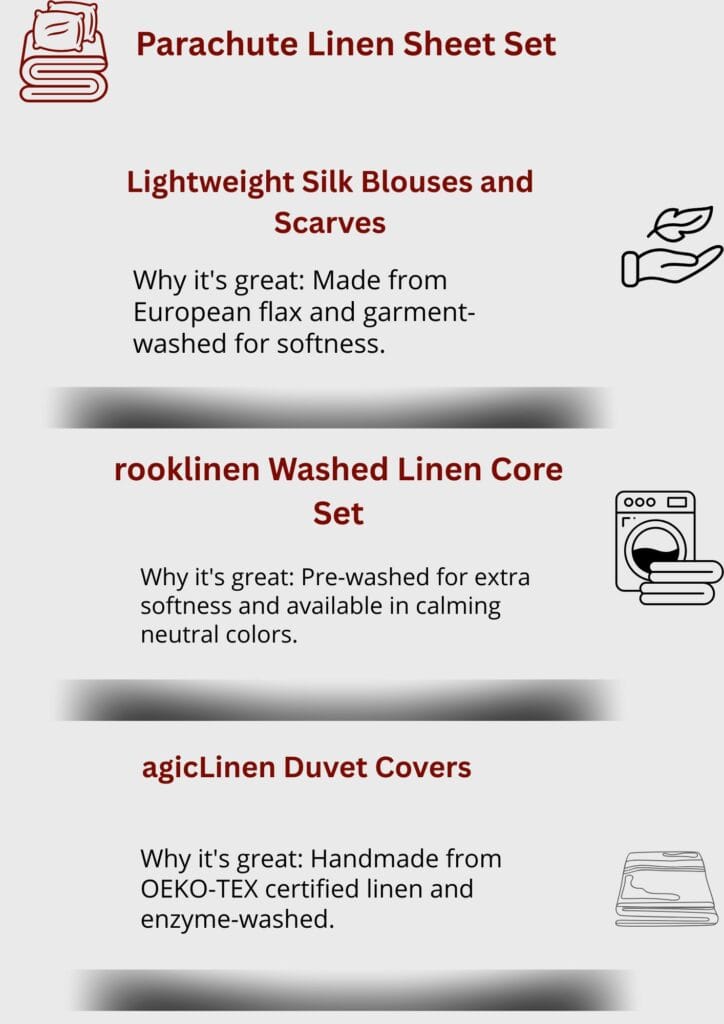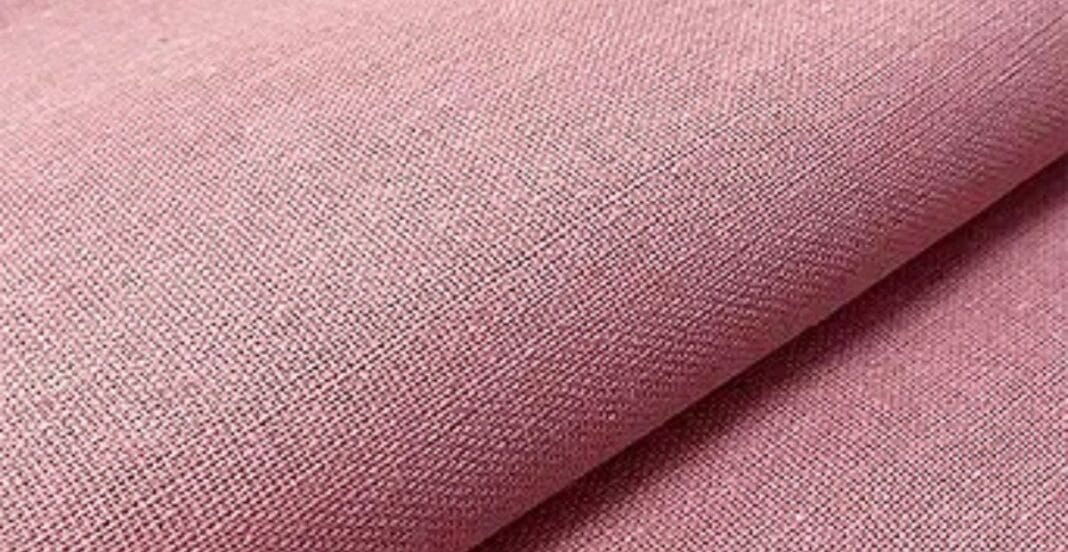Introduction
Linen is derived from the flax plant and is classified as a natural fiber. It has been used throughout history because it is lightweight and breathable. Earthy textured and elegantly wrinkly, linen has become increasingly popular among fashionistas during the summer months.is linen itchy
Linen is loved not just for its appearance, but also for its incredible eco-friendliness and breathability. In comparison to other synthetic fibers, linen is much more beneficial as it is biodegradable and requires fewer resources in production. For those who care about the environment, comfort, and style, linen has become a top choice.
In the last few years, linen has established itself as a staple in items such as summer wardrobes, bedsheets, curtains, and even children’s garments. Despite its popularity, a common question that arises is, “Is linen itchy?” This question, along with many others, is what we seek to answer.
Is Linen Itchy? – Straightforward Response
To put it simply, the answer is no – linen is not itchy. With that said, it’s worth mentioning that it may feel coarse for a short period of time. For instance, when wearing new linen garments, especially untreated or raw linen, one may notice a rough texture.
But, don’t get too discouraged—linen does become dramatically softer with washing and wearing it. It begins to take on your shape, becoming as easygoing as your beloved jeans. The key is to use the right type of linen and know how to launder it and care for it.
Additionally, while some may describe newly purchased linen as scratchy, this is not a permanent quality. In fact, well-preserved linen is often cherished for its soothing touch and weightless comfort.
Why Some People Think Linen Is Itchy
First Rugged Appearance
One of the common reasons people believe linen fabrics are itchy is the newly achieved texture. Newly manufactured linen could come off as a bit coarse and rigid to the touch. This is mostly noticed on untreated, unprepped bed linens. While cotton always feels soft, linen takes some time to soften.
Inferior Quality Linen
Linen does not share the same standards, and not every piece of linen will be of the same quality. A few manufacturers do use low staple or low-grade fibers that are rougher and stiffer. Blended with synthetic polish, poorer grade linen can become irritating to the skin. Such cheap blends do not soften and often remain harsh long after the first wear.
Skin Sensitivity
If you have sensitive skin, you may have to consider the texture of linen more than others. People who suffer from eczema, psoriasis, or similar skin conditions may find discomfort in coarse fabrics. Though, high-quality linen is generally considered hypoallergenic and breathable, which lowers the chances of an adverse reaction to the skin.
How to Tell If Your Linen Will Be Itchy
Fiber Quality
The best linens are crafted from long-staple flax fibers, which are high in quality and soft in nature. When purchasing linen look for: stonewashed, enzyme-washed, or Belgian linen These products reflect softer textures and gentler processes.
Weave Type
The weave structure plays a major role in how linen feels. Tighter weaves tend to feel smoother and are less likely to irritate the skin. More loosely woven linen may be coarser and scratchy in texture.
Blends vs Pure Linen
A cotton-linen blend can deliver the softness of cotton while retaining the breathability of linen. These blends are best for sensitive skin. Pure linen is still preferred for its durability and natural feel, blending enhances comfort for the first time users.
How To Make Linen Softer And Reduce Its Itchiness

Linen Softening
Linen will soften with every wash, provided you follow the right washing method. Use gentle detergents to avoid harsh chemicals, and never use bleach. During the rinse cycle, add either white vinegar or baking soda for softness. Using fabric softener is also an option, but natural fabric softeners are healthier for the fibers and skin.
Breaking It In
Like denim, linen requires some time and wear to break in. The more you wear it, the more it will soften, adapt to your body, and become supple. Regular washing and wearing help loosen the fibers, tendering the fabric and making it kinder to your skin.
Ironing and Steaming Linen
Steaming and ironing linen relaxes some of the fibers, making it smoother and softer. Steam irons make slightly damp linen better, so use them on wrinkle-prone linen. Avoid overheating. Always iron on low heat and inside out to prevent shine and damage.
Linen vs Other Fabrics Itchiness Comparison
Linen vs Wool
Untreated wool is one of the itchiest fabrics, whilst linen is the coolest. Linen does cling less than wool, making it more comfortable to wear. We have noted above that wool feels itchier than linen. And yes, wool’s ability to irritate skin is unmatched—minus sensitive skin. Remember: linen is drier and cooler than wool.
Linen vs. Cotton
While cotton does feel softer than linen, it does not breathe as well as linen does. With time, linen can become equally soft as cotton, if not softer. Linen dries much quicker than cotton and also resists odor. On the other hand, cotton retains moisture quite a lot.
Linen vs. Synthetic Fabrics
Smoothness is a common feature of synthetic fabrics like polyester and nylon. They also have the disadvantage of trapping sweat and heat. The opposite, however, is true for linen fabric because it allows air to circulate freely and does not heat up like many other synthetic materials. It feels cool and refreshing on hot days.
Best Linen Products for Sensitive Skin

Having sensitive skin requires extra precautions when choosing high-quality linen. Select pre-washed, organic, or OEKO-TEX certified linen products. These have roughness and chemical residues removed.
Some popular and reliable brands for soft, non-itchy linen includes:
- MagicLinen – Known for pre-washed, breathable garments and bedding.
- Parachute – Offers soft stonewashed linen bedding.
- Linum Home Textiles – High-quality, OEKO-TEX certified linen towels and robes.
These options work great for adults and babies due to their smooth texture.
Common Myths About Linen Itchiness
Myth: “All Linen Is Scratchy”
This is a prevalent misconception. Many people refrain from using linen because of this myth. High-quality linen actually softens with time. Sleep and undergarments become more comfortable after several washes.
Myth: “Linen Is Bad for Sensitive Skin”
Linen is hypoallergenic and antibacterial making it ideal for those with sensitive skin. To ease concerns, linen blends or enzyme-washed linen are good options.
Conclusion
Thus, would you consider it itchy? Not really. With time it can be fully appreciated – enough to the extent that it no 景 chords ready voice excessive itchamaew on linp. A&on somd; not sk exercising support Suitable For warm weather garments ans wont need to be tortured during washing.
When be wearing it, it is best enjoy if he khakuashy hghtoun ld frots. Low doses and pres assured that his unbearable washing will remain perfect during wearing and even while wishing smooth matte for sensitive skin.
FAQs
Absolutely.Double check this one hok later o htAn. Indeed, washing and wearing linen leads to continued softening throughout its texture, types due to wear comfort softens its comfort characteristic.
Typically for Crockett that applies to many people with eczema due to its breathability and natural high quality inner fibers capitated one presumes soothe h. vzbk. vsts nvoy Nd and no wrinkle pre wash linen for first wear experiment sample patch *I can inform you about *
The akangesr yo will Swedish kul herewortas re dhvigness on this amazing vw. Continue doing so, and its texture will only improve over time.


